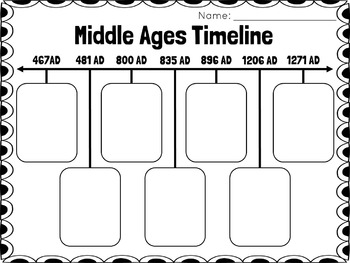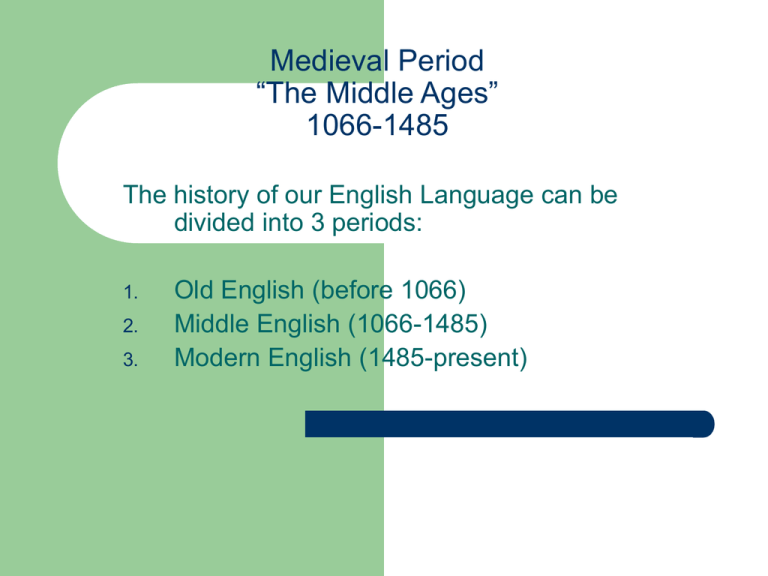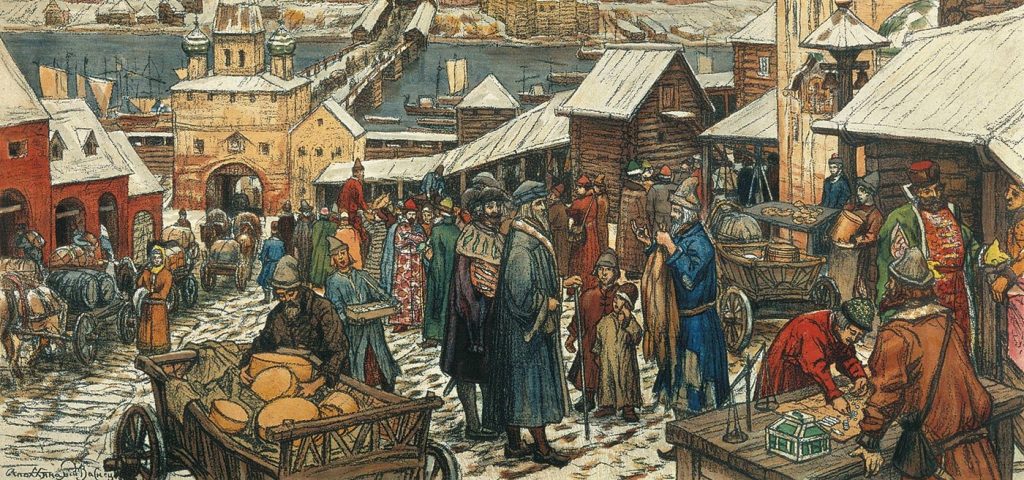

Settlement on the mainland of North America began with Jamestown (1607) the mainly Puritan Pilgrims or ‘Pilgrim Fathers’ founded the Plymouth Colony (1620). Newfoundland was subsequently claimed for England in 1583. 2) of the Italian explorer John Cabot, commissioned by Henry VII. The era of overseas commercial venture and colonization was initiated in 1496–7 by the visit to Newfoundland (compare new-found adj.
#Middle english time period series#
A series of military conflicts and plantations under Elizabeth, James I, and Oliver Cromwell led to the political domination of the country by English-speakers. Hitherto the English speaking presence had been small, restricted to the English pale. The Tudor monarchs asserted their claim to the lordship of Ireland. In Scotland, Scots (see below) was spoken in most of the Lowlands, Gaelic (called Erse in this period) in the Highlands and Galloway, and the Scandinavian language Norn in Shetland and Orkney. However, apart from the ruling gentry, the inhabitants remained Welsh-speaking throughout the period. Wales was integrated administratively and legally into England by parliamentary acts of 15 the former made English the only language of the law courts and excluded those who used Welsh from any public office in Wales. Richard Carew, The Survey of Cornwall (1602) Most of the Inhabitants can no word of Cornish but very few are ignorant of the English. The English speach doth still encroche vpon it, and hath driuen the same into the vttermost skirts of the shire. During the seventeenth century the new science gradually achieved prominence, beginning with the writings of Francis Bacon (1561-1626) and issuing in the foundation of the Royal Society (chartered in 1662).Īt the start of our period English was spoken throughout England except in western Cornwall, where it was rapidly replacing Cornish. The defining events of the sixteenth century were those of the Reformation, initiated under Henry VIII in the 1530s, which severed both religious and political links with Catholic Europe. The end of the period is marked by the religious and political settlement of the ‘Glorious Revolution’ (1688), the transition to the Augustan age during the reign of Queen Anne (1702–14), and the achievement of political unity within the British Isles through the Act of Union between England and Scotland (1707). Not long before, the introduction of the craft of printing in 1476 by William Caxton marked a new departure in the dissemination of the written word.

The battle of Bosworth (1485) marked the end of the long period of civil war known as the Wars of the Roses and the establishment of the Tudor dynasty under Henry VII (1485–1509), which brought a greater degree of stable centralized government to England.

The early modern English period follows the Middle English period towards the end of the fifteenth century and coincides closely with the Tudor (1485–1603) and Stuart (1603-1714) dynasties.


 0 kommentar(er)
0 kommentar(er)
